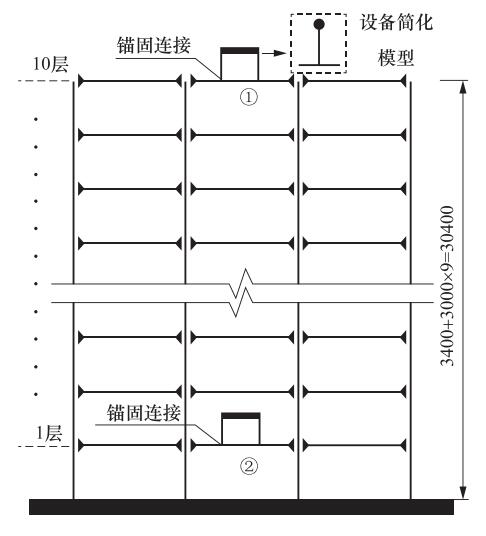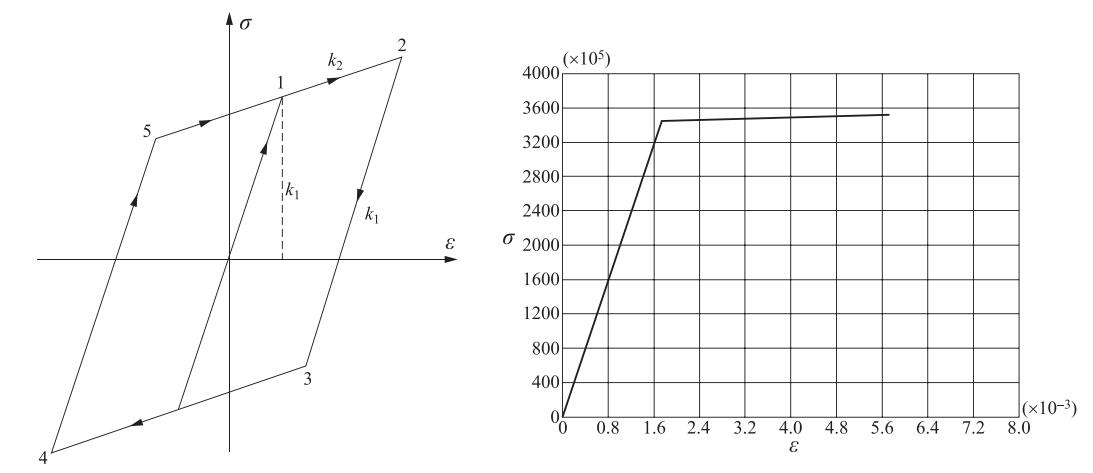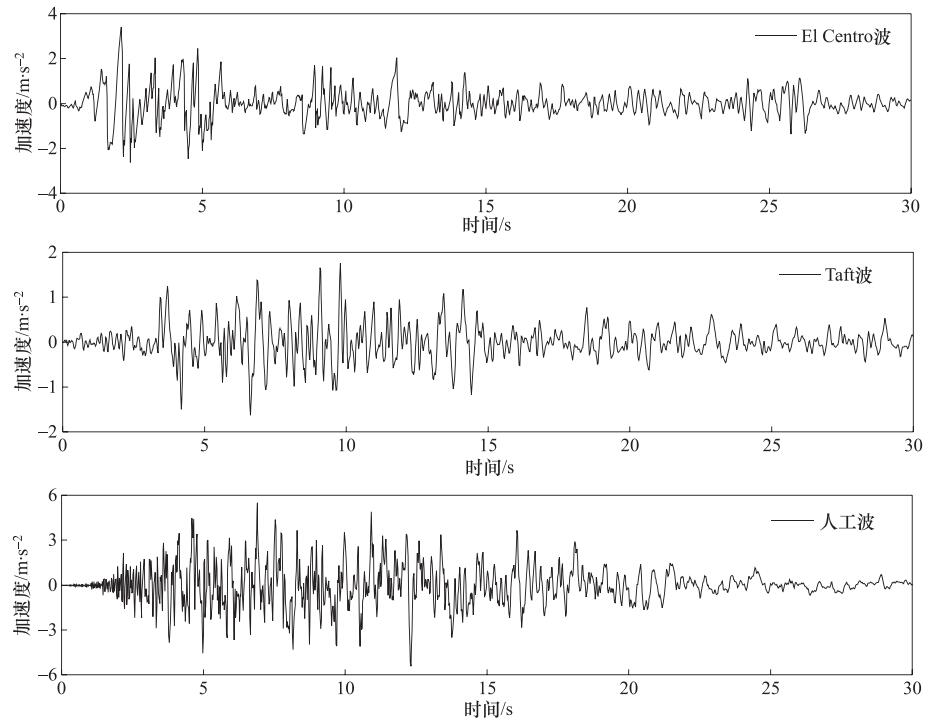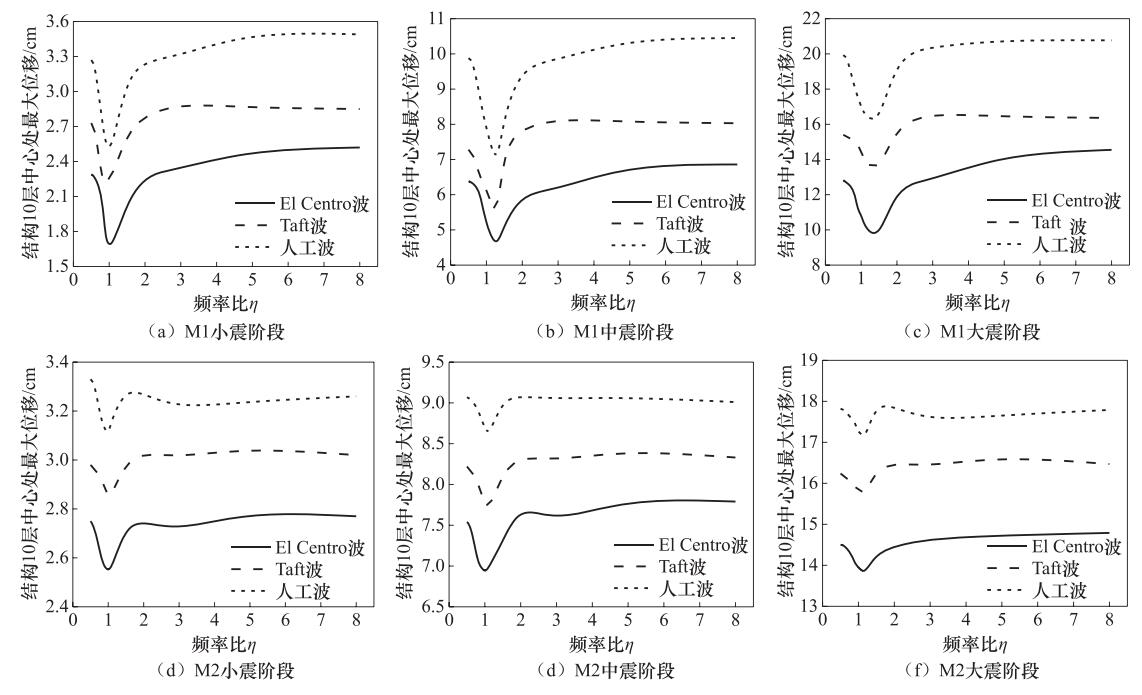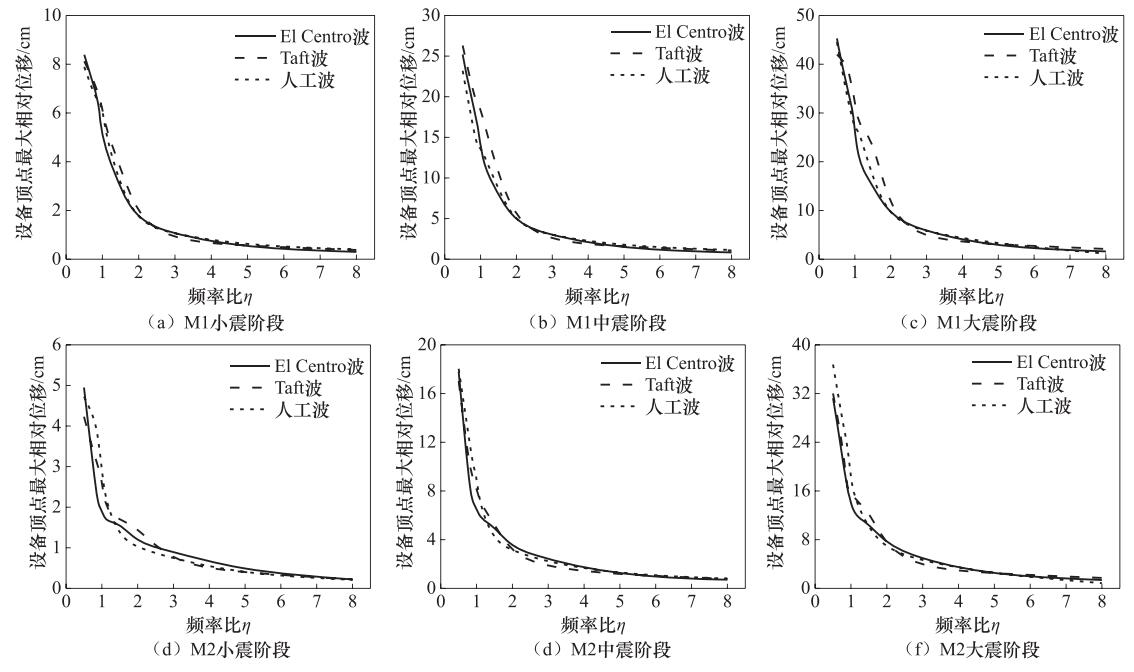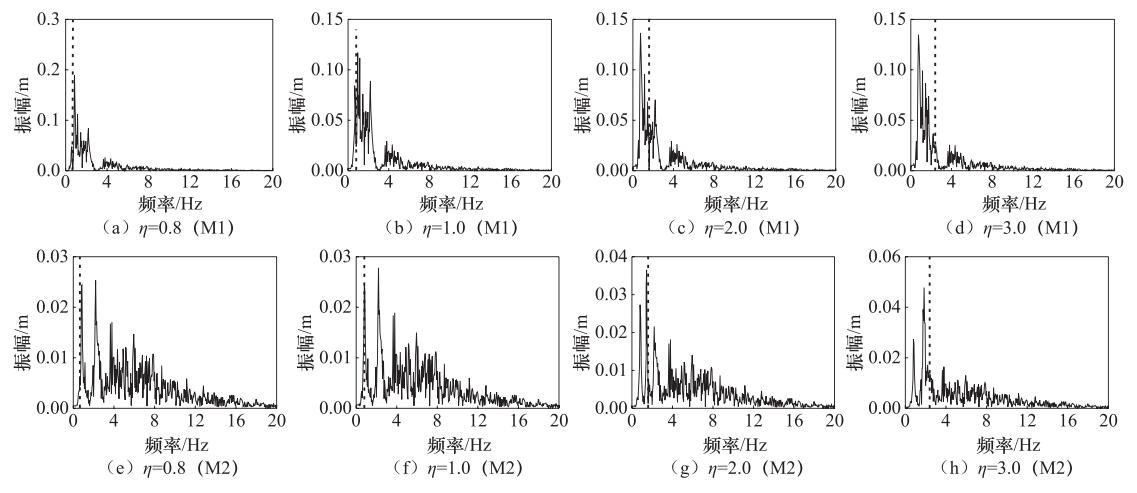The Influence of Equipment Location on Equipment-structure Interaction
-
摘要: 为了研究设备所在楼层位置对设备-结构相互作用的影响,以某高层钢框架为例,将设备分别放置于结构顶层和底层设计了2种设备-结构体系模型,然后利用ANSYS有限元分析软件对整体模型进行地震响应时程分析。分析结果表明:在El Centro波、Taft波和人工波作用下,当设备频率与结构基频调谐时,设备-结构相互作用会令结构动力响应减小而设备动力响应显著增大;设备-结构相互作用的大小与设备所在楼层密切相关:顶层设备与结构间的相互作用比底层更加剧烈,这与位于不同楼层的设备间等效质量以及底端输入激励频谱的差异有关。Abstract: In order to study the influence of the location of equipment on equipment-structure interaction, a high-rise steel frame is taken as an example, in which the equipment is placed on the top of the structure and the bottom of the structure respectively. Two kinds of equipment-structure system models are designed, and the whole analytical model is established by using ANSYS program for the seismic response analysis. The results indicate that under the action of El Centro wave, Taft wave and artificial wave, the equipment-structure interaction reduces the dynamic response of the structure whereas the dynamic response of the equipment increases significantly when the equipment frequency and the structure fundamental frequency are tuned. The interaction between the equipment and the structure is closely related to the location of the equipment, and the interaction between the equipment located on the top floor and the structure is more intense than the equipment located at the bottom floor. This is because of the differences between the equivalent quality and the input excitation spectrum at the bottom of the equipment located on the different floors.
-
表 1 梁柱截面尺寸
Table 1. Sectional dimension of beam-column
构件 楼层 截面尺寸/mm 框架柱 1—4 H550×500×22×26 5—8 H500×450×18×22 9—10 H450×400×16×20 框架主梁 1—10 H500×450×20×22 次梁 1—10 H450×350×16×18 表 2 结构自振频率
Table 2. The natural frequency of structure
阶数 自振频率/Hz 1 0.8020 2 0.8992 3 1.0228 4 2.3037 5 2.6371 表 3 El Centro波作用下λs1和λs2对比表
Table 3. Comparison of parameter λs1 and λs1 under El Centro wave
楼层 小震阶段 中震阶段 大震阶段 模型M1 模型M2 模型M1 模型M2 模型M1 模型M2 1 0.88 0.96 0.86 0.96 0.75 0.85 2 0.86 0.95 0.81 0.93 0.76 0.84 3 0.88 0.93 0.80 0.91 0.75 0.85 4 0.86 0.95 0.80 0.92 0.75 0.83 5 0.83 0.92 0.79 0.88 0.76 0.84 6 0.80 0.89 0.78 0.86 0.78 0.87 7 0.77 0.84 0.76 0.87 0.79 0.89 8 0.74 0.82 0.74 0.85 0.80 0.88 9 0.75 0.83 0.76 0.83 0.79 0.85 10 0.70 0.78 0.70 0.79 0.75 0.83 -
陈建兵, 李杰, 2001.结构-设备体系动力相互作用研究.地震工程与工程振动, 21(3):70-74. http://www.cqvip.com/QK/95364X/200103/5724284.html 国巍, 2009. 基于耦合效应的主-附结构体系地震响应研究. 大连: 大连理工大学. 韩淼, 秦丽, 2003.多点连接二次结构地震响应的研究方法.北京建筑工程学院学报, 19(4):13-17. http://mall.cnki.net/magazine/Article/BFJT200301015.htm 姜忻良, 温新, 2015a.土-结构体系的混合约束模态法在ANSYS中实施研究.震灾防御技术, 10(3):501-511. http://zzfy.eq-j.cn/zzfyjs/ch/reader/view_abstract.aspx?flag=1&file_no=20150303&journal_id=zzfyjs 姜忻良, 张海顺, 2015b.动力时程分析中弹塑性刚度矩阵的提取方法.天津大学学报(自然科学与工程技术版), 48(4):355-361. http://www.wanfangdata.com.cn/details/detail.do?_type=perio&id=tianjdxxb201504011 李建亮, 李福海, 彭晋川等, 2015.不同的地震动输入面对地震反应分析结果的影响.震灾防御技术, 10(3):522-530. doi: 10.11899/zzfy20150305 李杰, 陈淮, 孙增寿, 2003.结构-设备动力相互作用试验研究.工程力学, 20(1):157-161, 85. http://www.cqvip.com/QK/95324X/2003001/7694163.html 秦权, 李瑛, 1997.非结构件和设备的抗震设计楼面谱.清华大学学报(自然科学版), 37(6):84-86. http://www.cnki.com.cn/Article/CJFDTotal-QHXB706.021.htm 文波, 牛荻涛, 赵鹏, 2009.考虑结构-电气设备相互作用的配电楼系统地震反应分析.世界地震工程, 25(3):102-107. http://www.cqvip.com/QK/93082X/200903/31765130.html 张建霖, 2003.主次结构相互耦合下的楼层反应谱计算.厦门大学学报(自然科学版), 42(3):326-330. http://mall.cnki.net/magazine/article/ZDGC201401013.htm 中华人民共和国住房和城乡建设部, 中华人民共和国国家质量监督检验检疫总局, 2010. GB50011-2010建筑抗震设计规范. 北京: 中国建筑工业出版社. Politopoulos I., 2007. Some aspects of floor spectra of 1DOF nonlinear primary structures. Earthquake Engineering and Structural Dynamics, 36(8):975-993. doi: 10.1002/(ISSN)1096-9845 -



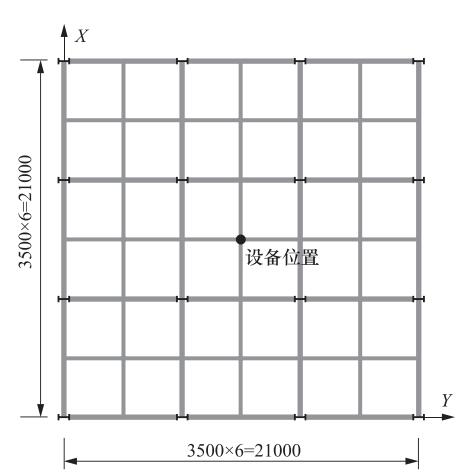
 下载:
下载:
